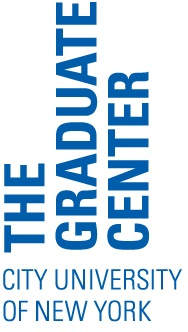Academic Conferences: Presentation Basics

Photo by Teemu Paananen on Unsplash
Presenting a paper at an academic conference for the first time can be intimidating for many people. But attending conferences is also a fantastic way to get feedback on your research and meet interesting colleagues—plus, as we’ve said before, it’s absolutely essential if you’re planning to pursue a career in academia.
Luckily, there are tons of blogs and articles out there on how to make attending a conference rewarding and stress-free. Here are a few tips and resources for planning a conference presentation.
Conference Basics
Conference presentations tend to be relatively short (about 15-20 minutes), and are usually followed by discussion. At many conferences, presenters are expected to read from a prepared text; however, some academics argue that it’s better to speak more spontaneously from an outline.
If you do plan on reading, keep in mind that it usually takes roughly 2 minutes to read one page of double-spaced text. It’s also helpful to edit the text so that it sounds more like colloquial speech. Use relatively short and simple declarative sentences, and remove any jargon and all but the most crucial quotations, recommends GC alum Alessandro Angelini.
Be sure to practice reading your paper for timing and flow, and rehearse enough so that you can look up regularly to make eye contact with your audience. A public talk must “always seem to be improvised, but it must never be improvised,” activist Dorothy Kenyon once advised (quoted in this handy list of Conference Rules from the Chronicle).
Sample Presentation Outline
1. Introduction and hook. What’s your research question, and why is it interesting? What motivated you to pursue this question in particular?
2. Brief overview of the presentation. What’s your thesis? Your audience should have an idea about where you’ll be going with the presentation before you get into specifics.
3. Lit review. What’s the scholarly context for your research question?
4. Methodology. How did you get your data? Why did you select your cases?
5. Discussion of research findings. What are a few preliminary findings that answer your research questions? You’ll likely only have time to develop one or two points, warns Inside Higher Ed, so it’s more effective to go into more depth about just a few particular aspects of your research.
6. Analysis and conclusion. How do these findings fit within your original theoretical context? Are there implications for future research? Your talk should build towards a dramatic climax, suggests Professor Terry Linhart, one that includes a clear “take-away” statement for your audience and answers the “so what?” question.
Visuals
Visuals (handouts, media clips, PowerPoint presentations, etc.) will also help keep your audience engaged. If you’re going to use PowerPoint, make sure to use a font that’s 24 point or larger, and limit the amount of text (instead, images and key quotes can work well to supplement your presentation).
You might also consider trying one of the newer alternatives to PowerPoint. If you’re including a lot of graphs and charts in your presentation, you might consider using LaTeX. (My program sponsored a talk by a successful job candidate the other week, and she told us that her biggest regret about her jobs talks was that she hadn’t used LaTeX while putting together her presentation. She said in Political Science at least, using LaTeX signals to the audience that you’re a professional and that you know what you’re doing.) Dr. Jonathan Rogers Check has compiled a list of tips for using the Beamer class in LaTeX.
You might also consider checking out a Prezi presentation on ten alternatives to Powerpoint (including Prezi itself, plus other options). Also, LifeHacker has a list of the five best PowerPoint alternatives, and asked readers to vote on their favorite. Keynote was the winner, although you may need to pay for the program if you’re not a Mac user. If you’d rather use a free program, check out this article on three free PowerPoint alternatives.
More Resources
- “How to Make the Most of Academic Conferences,” published in the Guardian, has tips of conference presentations and networking
- The website for the USC Center for Excellence in Teaching features a number of resources from the Teaching with Technology Conference
- The podcast episode “The Nuts and Bolts of Presentations” from Dr. Linda Vaughan mentions some pitfalls to watch out for
- The Conditionally Accepted blog has conference advice specifically for women, people of color, and people with disabilities




